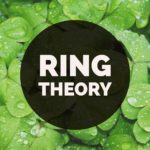A ring is Local if and only if the set of Non-Units is an Ideal

Problem 526
A ring is called local if it has a unique maximal ideal.
(a) Prove that a ring $R$ with $1$ is local if and only if the set of non-unit elements of $R$ is an ideal of $R$.
(b) Let $R$ be a ring with $1$ and suppose that $M$ is a maximal ideal of $R$.
Prove that if every element of $1+M$ is a unit, then $R$ is a local ring.
Sponsored Links
Contents
Proof of (a).
$(\implies)$: If $R$ is a local ring then the set of non-units is an ideal
Suppose that $R$ is a local ring and let $M$ be the unique maximal ideal of $R$.
We denote by $I$ the set of non-unit elements of $R$.
Let $a, b\in I$.
Since $a, b$ are non-unit elements, the ideals $(a)$ and $(b)$ generated by $a$ and $b$, respectively, are proper ideals of $R$.
Since $M$ is the only maximal ideal of $R$, it follows that
\[(a) \subset M \text{ and } (b) \subset M.\]
It yields that $a-b\in M$ since $a, b\in M$ and $M$ is an ideal.
As $M$ is a proper ideal, $a-b$ is a non-unit, hence $a-b\in I$.
Also for any $r\in R$, we have $ra\in M$ since $a\in M$ and $M$ is an ideal of $R$.
It follows that $ra$ is a non-unit because $M$ is a proper ideal.
Hence $ra\in I$.
Therefore the set $I$ is an ideal of $R$.
$(\impliedby)$: If the set of non-units is an ideal, then $R$ is a local ring
Suppose that the set $I$ of non-units elements in $R$ is an ideal of $R$.
Since $1\in R$ is a unit, $I$ is a proper ideal.
Let $M$ be an arbitrary maximal ideal of $R$.
Note that every element of $M$ is a non-unit element of $R$ since $M$ is a proper ideal.
Thus we have $M\subset I$.
Since $M$ is a maximal ideal, it yields that $M=I$.
Therefore $I$ is the unique maximal ideal of $R$, and hence $R$ is a local ring.
Proof of (b).
We prove that the maximal ideal $M$ is the set of non-units elements in $R$.
Then the result follows from part (a).
Take any $a\in R\setminus M$.
Then the ideal $(a)+M$ generated by $a$ and $M$ is strictly larger than $M$.
Hence
\[(a)+M=R\]
by the maximality of $M$.
Then there exists $r\in R$ and $m\in M$ such that
\[ra+m=1.\]
Since $ra=1-m\in 1+M$, it follows from the assumption that $ra$ is a unit.
It yield that $a$ is a unit.
Since $M$ contains no unit elements, we see that $M$ consists of non-unit elements of $R$.
Thus, by part (a) we conclude that $R$ is a local ring.
 Add to solve later
Add to solve later
Sponsored Links










